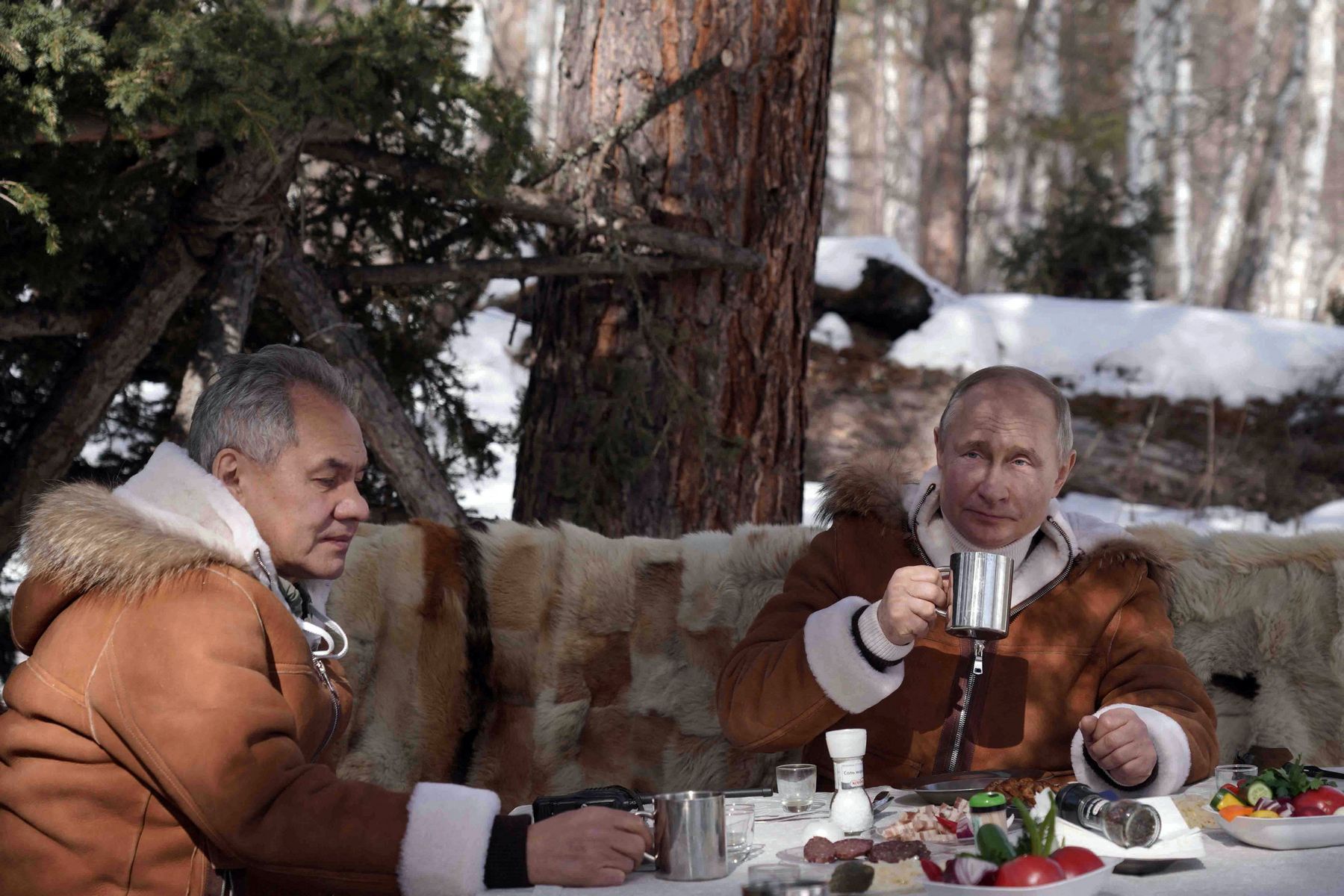Defense minister Sergei Shoigu proposed in August that the federal government should support the building of 3-5 industrial and economic centers in Siberia. These would, he envisioned, each become cities of 300-500,000 people.
On the face of it, this proposal could be discarded as a campaign trick. Shoigu has been more visible in recent months as the regime has turned to him and other figures like Sergei Lavrov to try to boost turnout for United Russia. But what could be dismissed as electioneering became more serious when Kremlin press secretary Dmitry Peskov later confirmed that Putin himself liked the idea of building new cities. (There’s a chance Shoigu talked Putin into the cities initiative with Putin while on vacation together.) A further endorsement then came from Viktoria Abramchenko, prime minister Mishustin’s appointed curator for Siberia. A parallel proposal to construct a satellite city near Vladivostok then emerged. This one, however, was met with disapproval by the Kremlin’s long-standing Far East strategist Yuri Trutnev.
Whether or not these cities ever get built, there is a whiff of the old in these new visions. City-building initiatives like these hark back to Soviet development efforts to maintain growth.
Searching for Growth
After all, Russian policymakers are still scrambling to figure out how to raise standards of living, incomes, and GDP while diversifying the economy — all without foreign investment. . Hydrocarbon exports ceased to support rising demand and investment by 2013. Even rising agricultural exports don’t provide a comparable lift to household incomes or other sectors. Export-led growth more generally is not working in Russia’s favour. Russia is a middle-income country with a GDP per capita in purchasing power adjusted terms of over $26,000, still about $8,000 higher than China and too high to competitively capture supply chains for a variety of consumer goods. Diversification relies most heavily on domestic demand.
But real incomes have fallen since 2013 and budget consolidations have reduced domestic demand too. The consumption-led growth needed to support various diversification efforts can only be sustained through household borrowing in the absence of real income increases. Russia’s economic response to COVID, meanwhile, has only deepened the problem. Household debts are now a record high of roughly 24 trillion rubles. The economy is now headed back into stagnation. Households are more indebted than ever and the Central Bank is raising the key rate again, increasing the costs of credit to fight inflation.
Political actors and policymakers must get creative in the face of weak demand and renewed budget consolidation. That’s where Shoigu’s notional Siberian cities and the proposal for a ‘satellite’ city outside Vladivostok fit in. The hope is that they could generate domestic demand between sectors while creating economic hubs for manufacturing, research, service industries, and consumption. It’s a revival of older traditions of Soviet state planning, one which banks on agglomeration effects. Reversing the population decline of both Siberia and the Far East over time is also a key development priority. Few would deny a need to do something to reduce domestic imbalances between European Russia and the rest of the country. But why start from scratch? Rebalancing is possible by focusing resources on existing cities. These have the advantage of being already built and connected by existing infrastructure.
Distorting Development
Though urban development initiatives have been a political priority since 2011, they haven’t been used to generate growth. Rather they’ve focused on delivering improvements in quality of life in the absence of a viable economic development strategy to help the Russian economy escape the middle-income trap. Building new cities risks distorting the allocation of resources in the same manner that the construction of countless ‘monotowns’ across Siberia and the Far East in the Soviet period did. Adding large, new population centers could strain supply and demand bottlenecks while necessitating a series of policy interventions to convince people to move that rack up costs.
New urban centers in Siberia and the Far East would likely be sustained through investments into natural resource extraction then intended to supply value-added production of various kinds. Shoigu’s thinking was to create industrially specialized clusters – one for copper and electrical equipment, one for aluminum, one for coking coal, one for plastics, and one for lumber and construction materials. These industries pay significant federal taxes which can provide financial resources, but existing infrastructure would face capacity issues. Already, capacity constraints have led to MinTrans intervening in support of prioritizing coal shipments in Eastern Siberia and the Far East to meet export targets set by Moscow. A privately-owned railway linking the Elgin coal field in Yakutia was authorized as a favor to the owner of the project, Al’bert Avdolyan, because of the large share of rolling stock dedicated to coal shipments competing with other bulk freight.
Huge volumes of housing would have to be built after a period of sustained price inflation for construction materials and labor shortages in the construction sector. After that, the authorities would probably still have to pay people to convince them to move, as well as offering financial incentives to businesses to invest. These resources would be diverted from more effective expenditures, including regional housing shortages where people already live, existing infrastructure bottlenecks, and fighting renewed industrial stagnation through income support for households or an increase in state procurements. As of now, the only spending impulse for 2021-2024 is a 1.5 trillion ruble withdrawal from the National Welfare Fund for targeted projects while returning the budget to surplus and avoiding deficit spending. Far more resources would be needed for any new city.
Supply-Side Personalism
Russian policymakers’ current focus on supply-side policies mirror Soviet economic practices that focused on the provision of investment as the central determinant of growth. The idea is that investing into projects creates demand, which then creates jobs and wages and consumption. But this approach faces two structural limitations. It requires an effective set of planning and coordination institutions at the local, regional, and federal level to be effective. Second, it doesn’t always lead to rising incomes and consumption. The second point is particularly acute now because the Russian economy is less complex than its Soviet predecessor.
The most effective federal investments tend to support or else cluster in exporting industries that in fact don’t employ many people. Russia’s extractive industries only accounted for 1.6% of all jobs as of 2020 according to Rosstat, with agriculture, forestry, hunting, and fishing accounting for another 6.5%. Those industries sustain the national balance of payments. They underpin the system of federal budgetary transfers and maintain demand for sector-specific goods and services. Yet they don’t generate much consumption in the households you need to make anything like a city-building initiative viable. Manufacturing accounted for 14% of national jobs last year. These ‘clusters’ risk repeating the structure of the national economy at the city-level, providing some demand for goods and services locally and from elsewhere, but in a manner that sustains stagnation. Investment alone can’t solve the demand problem.
Current debates within the Kremlin about proposals to redistribute windfall profits from exporters to households via taxation to fight inflation are a useful reminder of incredible caution decisionmakers exhibit whenever it comes to increasing household spending power through direct transfers.
The persistent negligence of demand as an investment and development driver then intermingles with the limited power of formal planning institutions like the Ministry of Economic Development and its counterpart Arctic and Far East Ministry. Major initiatives are either handed off to influential individuals and interest groups, or proposed by individuals like Shoigu. Projects can become fiefdoms. Different fiefs and supporters bid for the relevant procurement contracts.
The state organs could otherwise be focused on ensuring the maximum value is realized from parallel investments. With a new city to build, they would spend more time managing access to budgetary resources and finding ways of making inefficient spending more effective, often creating policy conflicts over tariff rates for energy or rail capacity as well as seeking state guarantees for private investment. A deformed, personalist style of supply-side economic policymaking emerges that undermines rational planning.
Shoigu’s proposal and its reception thus far reveals these problems of state capacity. Plowing resources into large projects like those he’s proposing can create demand and growth on paper, but end up hardening new supply chains and inter-sector dependencies often through state procurements, production orders affected by budget cycles, bids on shipping capacity, and in some instances privately-owned infrastructure intended to circumvent state monopolies. The result would be to embed long-term development on the personal preferences of a small group of interests and to constrain future policymakers’ choices. City-building like this, if it comes topass, will be evidence of central planning failure at the expense of existing cities across Siberia.










